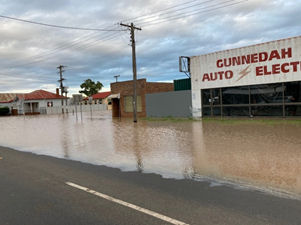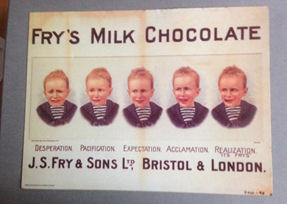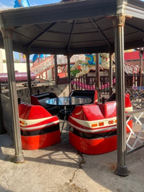Dates for your Diary
Saturday 12th February – Coffee Morning – Valentine’s Day 10:30 – 12:30
Saturday 12th March - Coffee Morning – 1992 Ebbw Vale Garden Festival 10:30 – 12:30
Museum opening times
The Museum is open to the public, free of charge:
Thursday* to Saturday 10am – 1pm
January 100 Club
This month’s prize numbers were drawn by Vice President Rev Roy Watson and the lucky winners are:-
No. 15 Lyn Bearcroft £20
No. 84 Colin Ewers £10
If you would like to join our 100 club and be in with a chance of winning, it costs just £1 a month. Ask at the museum for further details.
New Vice President
We are pleased to welcome Mrs Margaret Cook as a new Vice President for 2022
Coffee Mornings
We have two Coffee Mornings coming up, the first of which will be on Saturday 12th February and will be on 'St Valentine’. Who was St Valentine and why he is linked to romance? There will be a display of wedding related artefacts and we invite you to bring along your weddings photos and/or Valentine cards.
 Our second planned event will be on Saturday 12th March and will be on the 1992 Ebbw Vale Garden Festival. A short talk will be followed by a video of the Festival plus an exhibition of photos and other memorabilia. £2 entry, (members £1.50) to include hot drink and cake. Both events will run 10.30 – 12.30, all welcome.
Our second planned event will be on Saturday 12th March and will be on the 1992 Ebbw Vale Garden Festival. A short talk will be followed by a video of the Festival plus an exhibition of photos and other memorabilia. £2 entry, (members £1.50) to include hot drink and cake. Both events will run 10.30 – 12.30, all welcome.
Lacock update
Last month featured an article on the Wiltshire village of Lacock. A reader who has visited Lacock several times got in touch to say that as well as being famous for film and TV locations, Lacock has important links to photography.
Back in 1835 Lacock Abbey was home to one William Henry Fox Talbot and, frustrated by not being able to draw or paint, he wanted to find another way to ‘capture’ images. He is credited with having created the first ever photographic negative at the Abbey in 1835. The negative is barely bigger than a postage stamp and is on display at The Fox Talbot Museum at Lacock which explores the history of photography as well as hosting photographic exhibitions. Yet another reason to visit this unique village! For more information use this link.
Gunnedah & District Museum New South Wales
This newsletter is sent each month to Marie Hobson, the Secretary of Gunnedah & District Historical Society in Australia. Marie has links to Abertillery and she has sent greetings and news from her museum which she has kindly agreed for me to share with you all here…
New Year’s greetings from the Land Down Under!
So much has changed here since I last wrote, the drought has broken and the crops were looking good but Gunnedah and many other towns had to endure floods - so predictable after a drought. We had three floods in as many weeks with homes and businesses near the Namoi river impacted. Thankfully our coal mines were not affected so the economy survived with the wage input from miners.

Gunnedah under water
Still resilient, our town has bounced back and with a release from lockdown our businesses have survived. We have Omicron floating around now but 94% of our town is double vaxed with boosters already under way. We have 60 cases in our shire of 14,000.
We had a wonderful event at the museum in November when a memorial to Nurse Annie Egan was unveiled.
Annie grew up in Gunnedah and went to school at St Mary’s run by the Sisters of Mercy, three of her older sisters joined the congregation there. She trained as a nurse in Sydney and volunteered to nurse returning WW1 soldiers who had the Spanish Flu at North Head Quarantine Station on the coast of Sydney. As you know it was highly contagious and she died within a week. A government scandal was revealed when she was not allowed to have a priest for the last rites of the Catholic Church - she was a devout Catholic but was buried in a military funeral the following day at the quarantine station.
There was such a public outcry not just by the church but the general public that the government was forced to change its rules and ministers were from then on allowed to minister to the dying.
After her parents and some of her siblings died her grave was forgotten until a group of former veterans discovered it following a documentary on 60 Minutes about the Spanish Flu (this when COVID had started to change our lives).
Called ‘Pilgrim’s Projects’ they go around the country looking for WW1 veterans who have no headstone or memorial. A large rock was put in place beside our museum with a plaque embedded in it with an information board nearby. It was unveiled by former Governor General Peter Cosgrove who was once our chief of military forces. Many Egan family descendants attended and they were also invited to the former family home Rosewood just out of Gunnedah where a plaque was unveiled.

The plaque in honour of Nurse Annie Egan
On December 5th another ceremony was held at the quarantine station where Annie was remembered inside the hospital. Annie’s parents and a brother are buried here so the connection remains strong. RIP Annie.
Wishing each and every one of you good health
Marie Hobson
Secretary
Gunnedah & District Historical Society
And you can see more of Marie’s photos on our Facebook page.
Fry’s Five Boys
One of our exhibits at the museum is in plain sight and yet is probably the least noticed; I’m referring to our enamel sign in the café’s kitchen area depicting Fry’s ‘Five Boys’ chocolate bar. The sign shows a series of five photos of a young boy in a sailor suit and under each photo is a word that describes the boy’s expression which changes with each photo as the realisation dawns that he is about to have a bar of Fry’s milk chocolate!
The chocolate bar was launched in the early 1900s and cost 6d and was marked off into five segments with each one depicting one of the five faces, Desperation, Pacification, Expectation, Acclamation and Realization (spelt with a z), ‘It’s Fry’s’. Closer examination shows there is a piece of chocolate in the boy’s mouth in photo number five.
According to an expert on the Antiques Roadshow which featured one of these signs (series 42, Castle Ward 2), the young lad was Lindsay Poulton and the photos were taken by his father pre 1900. In order to get his son to cry it is said he hung an ammonia-soaked cloth around the poor boy’s neck! The lad certainly deserved that chocolate!

Our particular sign, pictured above, was donated by a Mr Bernard Hill in 2010. Take a look on your next visit!
For more information, use the links below.
Wikipedia Page
Feeling My Age
Ways To Support The Museum
We are an independent museum, run entirely by unpaid volunteers for the benefit of the community. There are several ways you can help with our running costs
 Become a member for just £6 a year. Call in to sign up and get a free hot drink in our café every month.
Become a member for just £6 a year. Call in to sign up and get a free hot drink in our café every month.- Make a donation to the museum on our ‘Go Fund Me’ page. To access the donation page scan the QR code.
- Shop at AmazonSmile and nominate Abertillery Museum as your chosen charity.
When you shop at AmazonSmile you get the exact same goods at the exact same prices as at Amazon but with the added benefit of supporting a charity at no cost to yourself. If you prefer to shop via the Amazon app on your phone or tablet, turn on ‘Smile’ in the apps settings.
For more information on any of the above please contact the museum.
Museum Website
Thanks to our web manager Mr Gary Martin, our website now has a new page! Our ‘What’s On’ page is where any planned events will be posted. Check it out using this link.
 Now that’s Recycling!
Now that’s Recycling!
Old fairground seats are being used as seating areas for picnickers at
Blackpool Pleasure Beach.
Now that’s what I call recycling!
Air France Flight 4590

On 25th July 2000, at Charles de Gaulle airport, Concorde’s unblemished flying record came to a horrifying and tragic end, resulting in the death of all on board plus four on the ground. A piece of debris left on the runway by another aircraft, ripped into Concorde’s tyre and a piece of the tyre ruptured the fuel tank. At least that’s what I had understood to have happened until I watched a Channel 5 documentary and realised there was a lot more to it. Indeed there were a series of events that all led to that fateful crash…
Concorde was mainly the genius of one brilliant engineer, British man Ted Talbot, and it is he that we have to thank for an aircraft that was years ahead of its time. It was due to the huge costs of developing Concorde that we had to seek out a partner and after being turned down by the Americans, the French agreed to come on board and if it were not for that one fateful crash at a French airport, Concorde may well still be flying today.
A few days before the accident, Concorde had been undergoing maintenance by French engineers. This had involved disassembling the landing gear. In re-assembling the gear, they left out a vital part – a spacer that sat between the wheels to hold them rigidly apart. Error number one.
The day of the fateful flight, most of the passengers on board were heading to New York where they were joining a cruise ship. Passengers going on luxury cruises like to take extra luggage so the plane was carrying more bags than usual however, unbeknown to the crew, there were an additional 20+ bags that were not listed. Error number two.
Concorde’s tanks were fuelled up that day with the automatic cut-off being at 82% capacity as per normal in order to allow for some ‘air space’ within the fuel tanks. However, as the Captain knew there were some extra bags on board (though not the total extent), he overrode the cut-off and filled the tanks to capacity. This meant with the extra bags and extra fuel, the aeroplane was more than a ton overweight when she took off. Error number three.
Error number four was that the ground maintenance crew had failed to spot debris on the runway so as Air France Flight 4590 travelled down the runway that fateful day two things happened; Concorde started to pull to the left due to the missing spacer which caused ‘wheel wobble’ and almost at the same time, she struck the piece of debris lying on the runway.
A further complication was that another aircraft, carrying none other than the French President himself, was on the left hand side of the runway, waiting to cross and, because she was veering to the left, Concorde found herself on a collision course with the President’s plane. Her captain had no option but to take off even though full speed had not quite been reached. The piece of debris on the runway then ripped into the tyre, causing the tyre to shed, a piece of the tyre hit one of the fuel tanks setting off a shock wave inside. With no air space inside the fuel tank due to it being overfull, the resulting shockwave caused the tank to rupture and for fuel to burst out and set an engine on fire.
But the fifth and final error that signed the death warrant of all aboard was still to come.
These days most planes only have a crew of two but this flight had a crew of three, the third being the flight engineer. Even an engine on fire will give some lift but, seeing the engine on fire and without any authority from the captain, the flight engineer shut down that engine and the moment he did, he sealed the fate of the aircraft.
In summary, on 25th July 2000, Air France Flight 4590, in trying to avoid a collision thanks to the missing spacer, hit debris on the runway and took off before full speed was reached. Its fuel tanks had been overfilled, the plane was overweight and the flight engineer shut down an engine giving them no chance of gaining height.
Even though all these errors were made by humans and were nothing to do with Concorde herself, modifications were later made to the tyres and fuel tanks but passenger confidence was lost and the rest, as they say, is history and her last flight was on 24th October 2003. Who knows, if Britain had been able to develop Concorde without the help of the French then maybe the accident would never have happened and she may well still be ‘Queen of the Skies’ today.
Sally Murphy
Watch the documentary using this link.
Top Of Page
